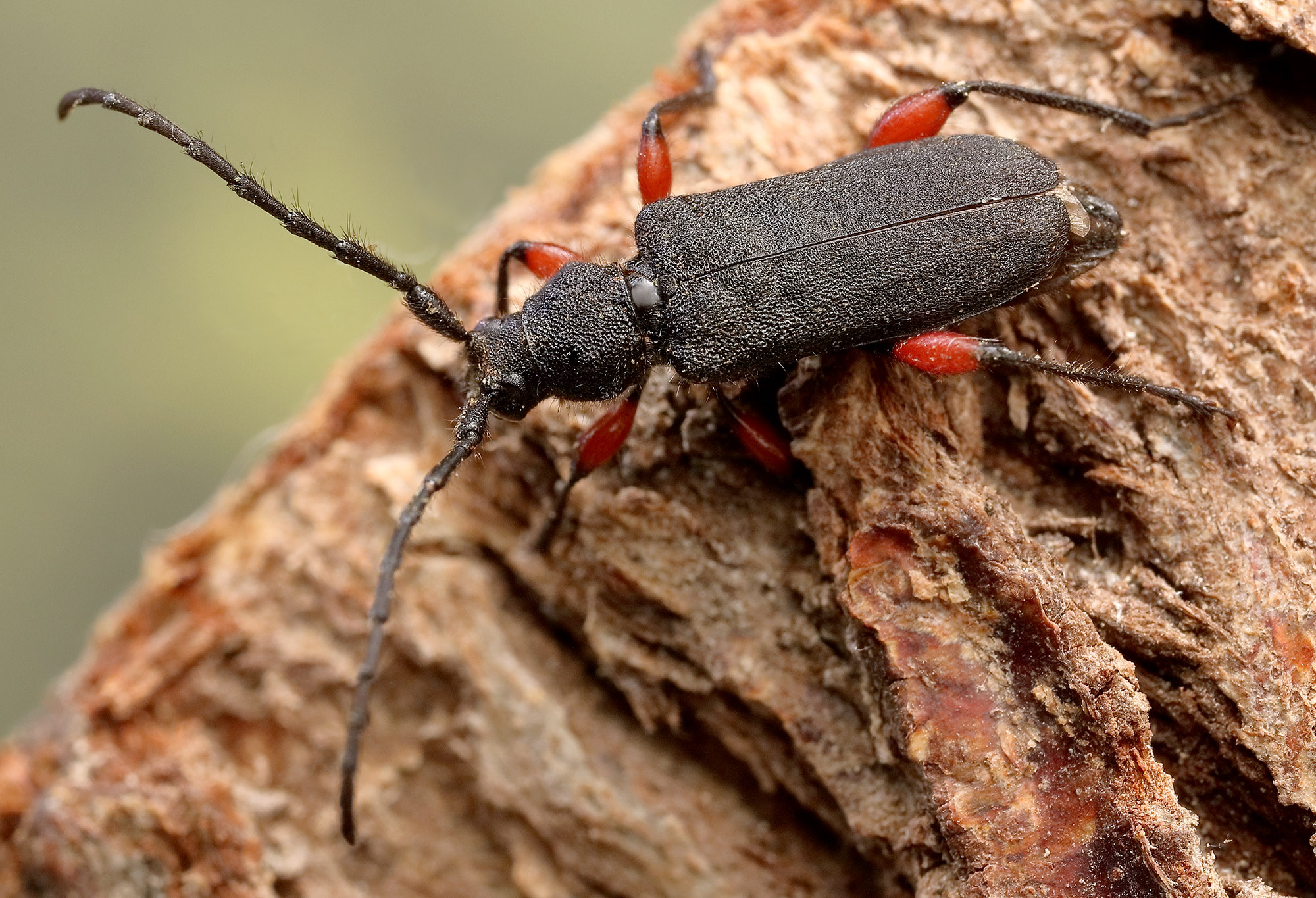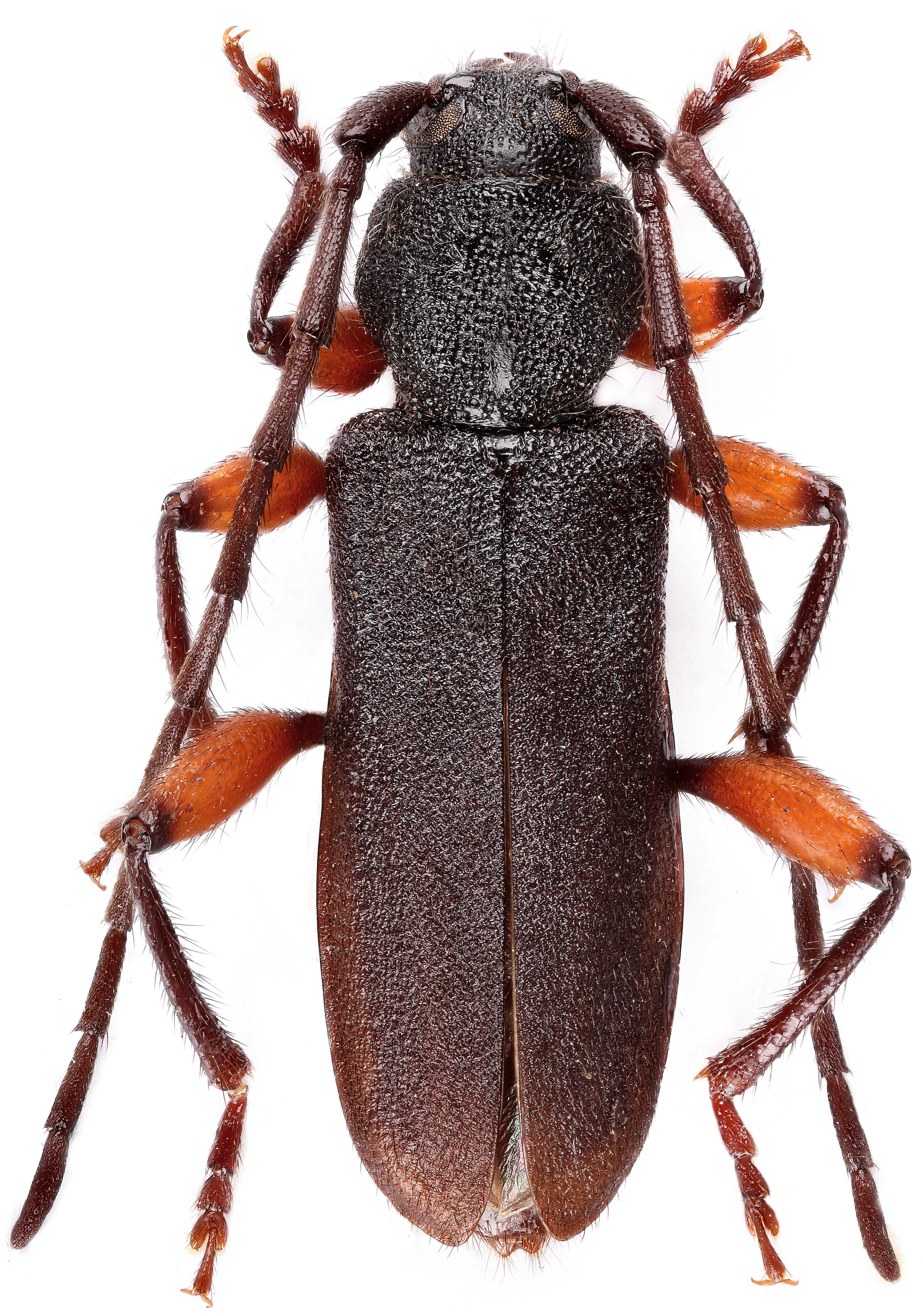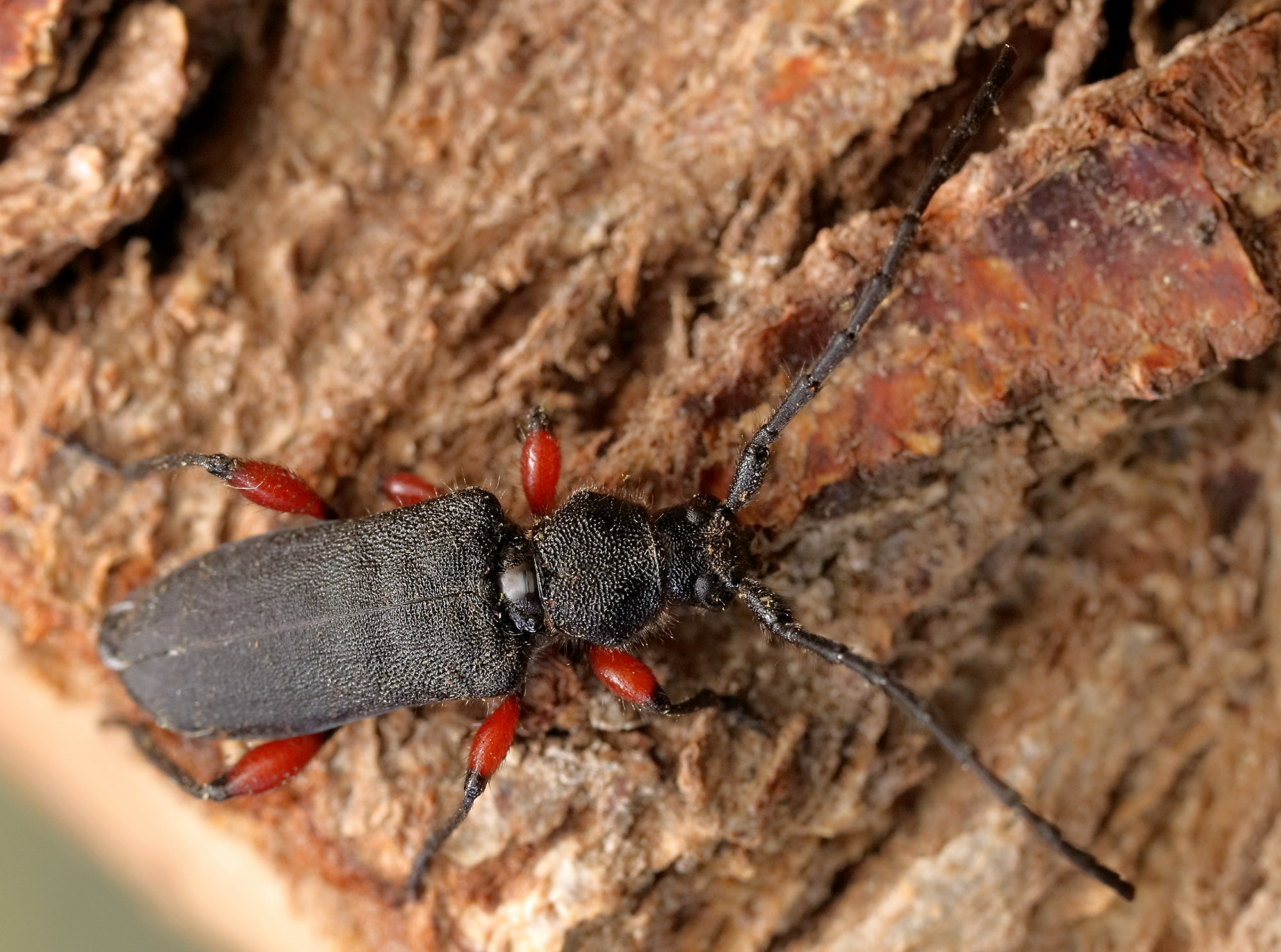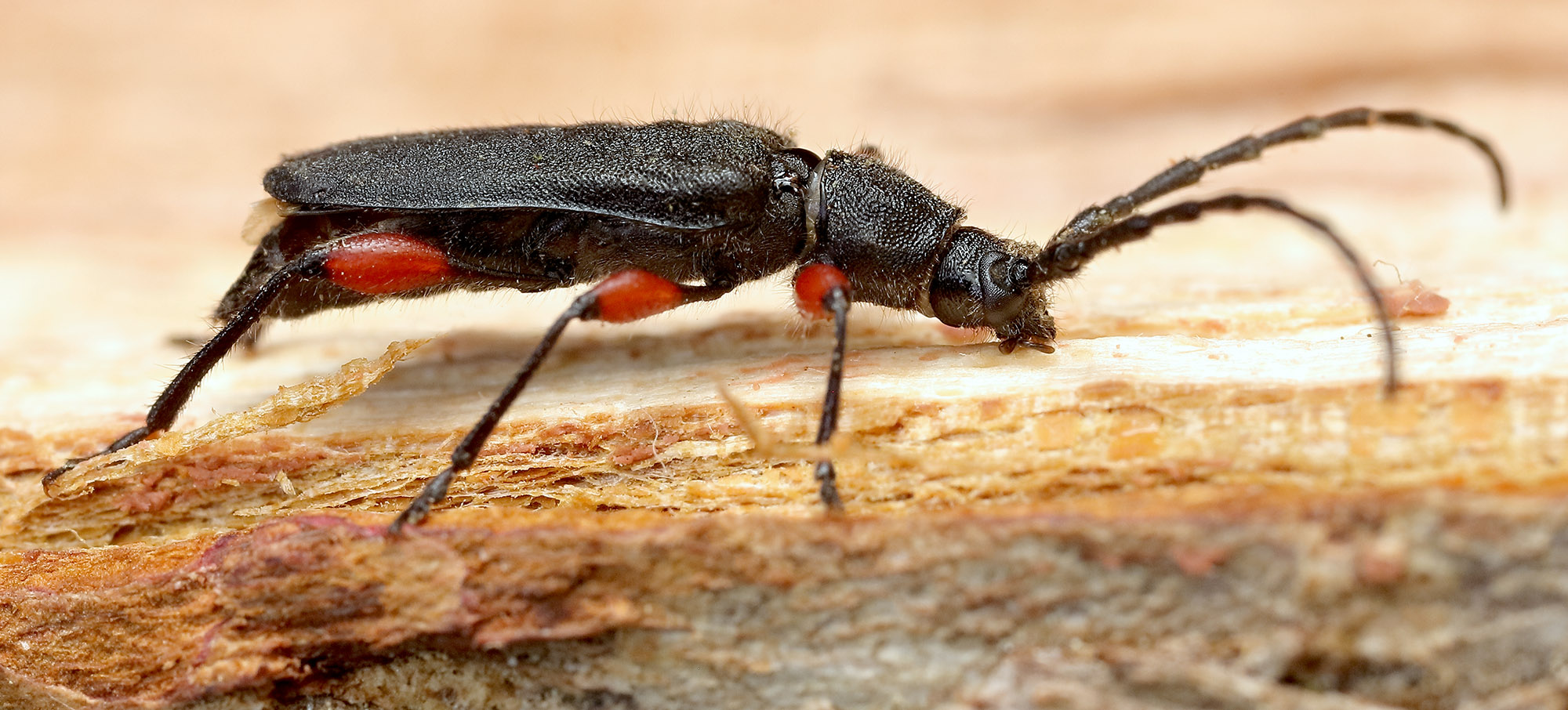Ropalopus femoratus only occurs in Europe. Locally it is quite frequent. It develops in dry thin twigs of various deciduous trees and shrubs. Very frequently in our
climate it attacks dead or dying twigs of Corylus avellana and Quercus spp.
Larvae feed subcortically creating broad galleries and later they build a shallow pupal cell in the sapwood. Life-cycle 1 - 2 years, adults occur from the end of May to July with peak in the first half of June,
preferably on drying branches, on logs, fallen trees and sometimes also on flowers, such as Crataegus [❖][✧].
| Body length: | 7 - 14 mm |
| Life cycle: | 1 - 2 years |
| Adults in: | May - July |
| Host plant: | polyphagous in deciduous trees (Quercus, Corylus, Castanea, Juglans, Malus, Prunus, Rosa etc.) |
| Distribution: | Europe except North |
The depicted living beetle was reared from larva found in a dead oak (Quercus sp.) in Křivoklátsko Protected Landscape Area (Central Bohemia, Czechia).
The mounted specimen was captured in South Moravia (Czechia).
Collected by Miroslav Polcar
[❖]
Sláma M.E.F.:
Tesaříkovití – Cerambycidae České republiky a Slovenské republiky / Cerambycidae of the Czech Republic and Slovak Republic.
Milan Sláma private printing, Krhanice, 383pp [pages 131-132], 1998 [ISBN: 80-238-2627-1].
[download  ]
]
[✧]
Vitali F.:
Atlas of the Insects of the Grand-Duchy of Luxembourg: Coleoptera, Cerambycidae.
Ferrantia, Musée national d’histoire naturelle, Luxembourg 79: 1-208 [pages 78-79], 2018.
[download  ]
]





